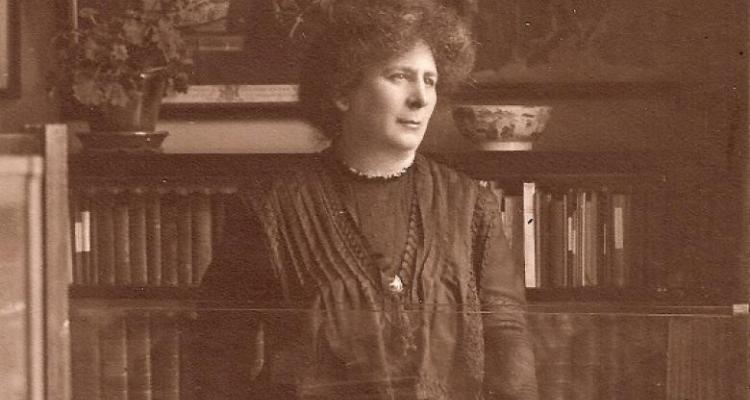Photo: Hertha Ayrton in her laboratory, taken by J Russell & Sons, 1910 (archive reference: GCPH 7/3/3/2)
Hertha Ayrton (1854–1923) is one of the great heroes, not only of Girton, but of Science itself and of Mathematics. Educated by her aunts who ran a school in northwest London, and at Girton, supported by the generosity of Barbara Bodichon and George Eliot, she studied Mathematics (1876–1881) and was coached by physicist Richard Glazebrook. She went on to become one of the most influential British women scientists.
During her time at Cambridge, Hertha constructed a sphygmomanometer (blood pressure meter), led the choral society, founded the Girton fire brigade, and, together with Charlotte Scott (Girton's first Wrangler*) formed a mathematical club.
Though the University did not grant her a degree Hertha went on to demonstrate that a woman was capable of excelling most of the men in her chosen fields, in spite of the institutionalised prejudice that tried to hold her back. She excelled not only as a scientist and mathematician but also as an inventor. By the time she died in 1923 she had patented no fewer than 26 new inventions.
One of Hertha's important contributions was to the study of electric arcs, used in the late 1800s and 1900s for indoor and outdoor lighting. Her work on understanding electric arcs led her to being the first woman elected to the Institution of Electrical Engineers, now the IET. In 1902, she prevented was from joining the Royal Society as at the time married women had no standing in law, so she was deemed ineligible. In 1906, however, she was the first female recipient of the Royal Society’s Hughes Medal. It would be a further 102 years before another women won the award.
Hertha’s later research into water and air vortices, inspired by the formation of ripples in the sand made by wave motions on the beaches of Kent, resulted in a life-saving application, the ‘Ayrton anti-gas fan’. The fan was a simple hand-held device used to clear gases from frontline trenches during World War I.
In addition to her scientific achievements Hertha was a stalwart of the women's movement. She supported the suffragists and marched in all the suffrage processions. She also made her home available to nurse campaigners recovering from hunger strikes before they were returned to prison under the ‘Cat and Mouse Act’—the Prisoners (Temporary Discharge for Ill-Health) Act of 1913.
Hertha is remembered to this day in College thanks to the generosity of her friend Ottilie Hancock (d. 1929) who endowed the Hertha Ayrton Science Fellowship in her memory.
* At the University of Cambridge a 'Wrangler' is a student who gains first-class honours in the Mathematical Tripos.

